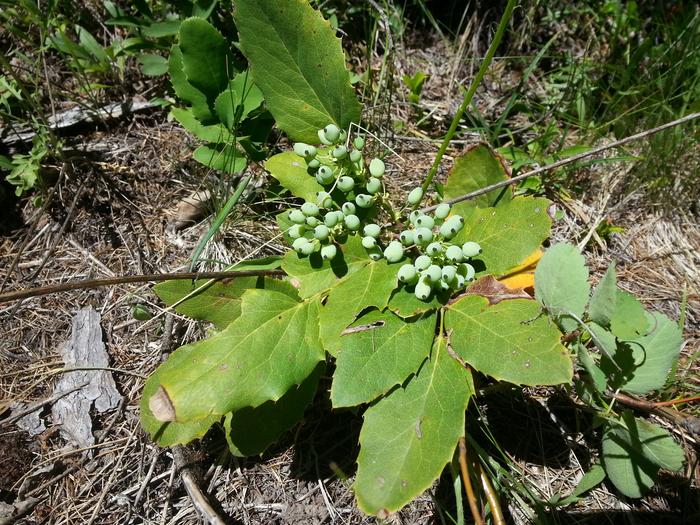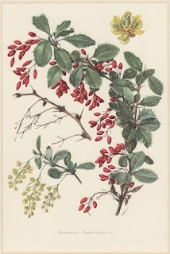Today, dear
Kai (and
Evan?) gifted me with some Oregon grape root from where he was digging a new garden bed.
Josh and maybe others have gifted me with this in the past. I love it!
Thank you guys!
Mostly, I've been pretty casual (i.e., lazy) in how I dry, save and use the root for tea. Paul has mentioned a few times that he thought it was just the inner bark that was best to use, so I thought I'd finally do a bit of research before drying these roots for my tea stash.

(Oregon grape, we think it's M. nervosa, here at wheaton labs -
photo by Fred.)
Here on permies I found two threads:
Mahonia or Oregon Grape (using the fruit) - this was started by someone wondering about using the berries for jelly.
oregon grape root (medicinal - use for candida?) - this was a thread asking about whether it is effective against candida and athlete's foot.

(Another pic of Oregon grape at wheaton labs, this time
by Evan.)
So I thought I'd start a new thread about harvesting and medicinal uses in general. I've learned some cool things.
Harvesting:
--root is commonly harvested
--stems have as much or more medicinal properties as root
--berries and flowers are edible though not usually used medicinally
--yellow inner bark often used as a dye
Medicinal uses:
--berberine (also found in barberry and goldenseal) is antiseptic and antiviral
--contains lots of other useful phytochemicals as well as tannins
--topical (as cream) helps heal psoriasis
--acts positively on liver
Sources:
http://www.herbalremediesadvice.org/oregon-grape-herb.html
https://www.mountainroseherbs.com/products/oregon-grape-root/profile
http://www.webmd.com/vitamins-supplements/ingredientmono-493-oregon%20grape.aspx?activeingredientid=493&activeingredientname=oregon%20grape
http://wildfoodsandmedicines.com/oregon-grape/
From that last Wild Foods and Medicines link:
As a beginning herbalist I was instructed to dig up dwarf Oregon grape rhizomes to harvest the potent medicinal yellow bark. This was a tedious process since I had to dig the entire plant, wash the roots, and then carefully scrape the outer bark with a knife so that all of the yellow bark was removed from the inner white root. I felt guilty killing the plant. Years later, Skokomish elder Bruce Miller showed me how to peel the bark off the large stems of tall Oregon grape. He took me to a plant that he had been harvesting from for over 30 years and it did not look damaged by the taking! I enthusiastically cut a few 8-foot stems and easily stripped them – no digging or washing necessary. Out of curiosity, I tested the berberine content (an alkaloid that has potent medicinal properties) on both the dwarf Oregon grape root and the tall Oregon grape stem bark with thin layer chromatography. The stem was slightly higher in berberine. Needless to say, I have never gone back to digging the roots!
What other tips and experience do you all have with Oregon grape?








